
Frank Cady
RETURN TO INDEX |
U.S. Army Air Forces
 |
American
actor best
known for his recurring and popular role as storekeeper
Sam Drucker in
three U.S.
television series during the 1960s:
Petticoat
Junction,
Green Acres and
The
Beverly Hillbillies.
Served during WW2. |
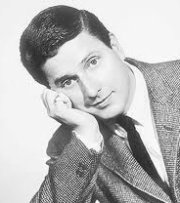
Jess Cain
RETURN TO INDEX |
U.S. Army


 |
American radio personality. For 34 years, from 1957 to 1991, Cain was
the morning drive personality on WHDH-AM in Boston. Cain also was
a professional actor and appeared in numerous theater and musical
theater productions, and appeared in early television on the Sergeant
Bilko {a.k.a "Phil Silvers"] Show. In the Boston area, he was
known especially for playing Ebenezer Scrooge in Charles Dickens'
A Christmas
Carol. Cain's song about Carl Yastrzemski - which he adapted
from an old ragtime tune called "Shoutin' Liza Trombone" -
appeared on "The Impossible Dream," a WHDH-produced album commemorating
the 1967 Boston Red Sox season and later as part of the soundtrack of
the 2005 movie
Fever Pitch.
Served in WW2 in the
Battle of the
Bulge and earning the Silver Star. On 16 March 1945 while
serving with Company A, 275th Infantry Regiment, 70th Infantry Division
near Saarbrucken, Germany, Private Cain was the only one of a group of
fifteen men sent to obtain information and determine enemy strength in
the Siegfried Line, who was not a casualty in the machine-gun trap
sprung on them. Crawling, creeping, and finally running, while
enemy machine-gun and burp guns blazed away at him, Private Cain made
his way back to his Battalion Command Post to report the situation.
He then directed the laying of a smoke screen by the mortars, and then
led a second group to the scene. Seven painfully wounded men were
evacuated while streams of enemy fire probed the smoke-covered field in
an attempt to hamper the movement and escape. |
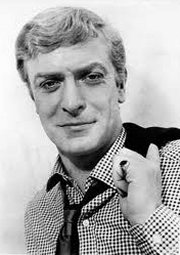
Michael Caine
RETURN TO INDEX |
British Army |
English film actor. He became well known for a number of popular
and notable critically acclaimed performances, particularly in films
such as
Zulu (1964);
The Ipcress File (1965);
Alfie (1966);
The Italian Job (1969);
The Battle Of Britain (1969);
Get Carter (1971);
Sleuth (1972);
The Man Who Would Be King (1975);
Educating Rita (1983);
Without a Clue
(1988);
Dirty Rotten Scoundrels (1988);
The
Muppet Christmas Carol (1992);
Secondhand Lions
(2003); Academy Award-winning performances for best supporting actor in
both
Hannah and Her Sisters (1986), and
The Cider House Rules (1999); as
Nigel Powers in
the parody
Austin Powers in Goldmember (2002); and more recently as
Alfred
Pennyworth, the butler from
Batman Begins
(2005), and
The Dark Knight (2008), the protagonist in
Harry Brown (2009) and a supporting character in
Inception (2010).
Caine is one of only two actors nominated for an Academy Award for
acting (either lead or supporting) in every decade from the 1960s to
2000s (the other one being
Jack Nicholson). In 2000, Caine was knighted by Queen Elizabeth II, in recognition of his
contribution to cinema.
Called for National Service in 1952, until 1954, he served in the
British Army's Royal Fusiliers, first at the British Army of the Rhine
HQ in Iserlohn, Germany and then on active service during the Korean
War. |

Archie Campbell
RETURN TO INDEX |
U.S. Navy
 |
American writer and star of
Hee Haw, a popular
long-running country-flavored network television variety show. He
was also a recording artist with several hits on the RCA label in the
1960s.
Joined in 1941 and served until the end of WW2. |
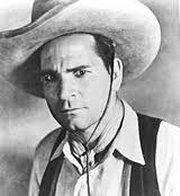
Yakima Canutt
RETURN TO INDEX |
U.S. Navy
 |
American rodeo rider, actor, stuntman and action director. started
bronc riding at the Whitman County Fair in Colfax in 1912 and at 17 he
won the title of World's Best Bronco Buster. Canutt started rodeo riding
professionally and gained a reputation as a bronc rider, bulldogger and
all-around cowboy. Won his first world championship at the
Olympics of the West in 1917. He won the saddle-bronc competition
three years in 1921, 1922 and 1923. He had won the saddle-bronc
competition in Pendleton in 1917, 1919, and 1923 and came second in
1915, and 1929. Canutt won the steer bulldogging in 1920, and 1921 and
won the All-Around Police Gazette belt in 1917, 1919, 1920 and 1923.
Canutt introduced many British stuntmen to Hollywood-style stunt
training. Canutt directed the close-action scenes for Stanley
Kubrick's
Spartacus. For
Ben-Hur, Canutt staged the chariot race with nine teams of four
horses. Canutt has a star on the Hollywood Walk of Fame at 1500
Vine Street. In 1967, he was given an Honorary Academy Award for
achievements as a stunt man and for developing safety devices to protect
stunt men everywhere. He was inducted into the National Cowboy & Western
Heritage Museum (Hall of Fame).
Served during WW1 and was stationed at Bremerton, Washington. |
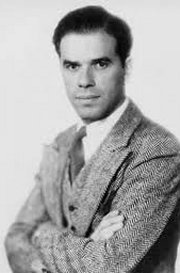
Frank Capra
RETURN TO INDEX |
U.S. Army



 |
Sicilian-born American film director and a creative force behind a
number of films of the 1930s and 1940s, including
It Happened One Night (1934),
Mr. Deeds Goes to Town (1936),
Lost Horizon (1937),
You Can't Take It With You (1938),
Mr. Smith Goes to Washington (1939),
Meet John Doe (1941),
Arsenic and Old Lace (1944) and
It's a Wonderful Life (1946). Capra won a total of six Academy
Awards. He was nominated six times for Best Director and six times
for Outstanding Production/Best Picture. Out of six nominations
for Best Director, Capra received the award three times. He
briefly held the record for winning the most Best Director Oscars when
he won for the third time in 1938.
Enlisted on October 18, 1918. He taught ballistics and mathematics
to artillerymen at Fort Winfield Scott in the Presidio of San Francisco.
While there, he caught Spanish flu and was medically discharged with the
rank of second lieutenant on December 13, 1918. He became a
naturalized U.S. citizen in 1920 as Frank Russell Capra. He was
commissioned as a major in the Army Signal Corps during WW2. He
directed or co-directed ten documentary propaganda films between 1942
and 1948, including the seven-episode U.S. government-commissioned
Why We Fight series - consisting of
Prelude to War (1942),
The Nazis Strike (1942),
The Battle of Britain (1943),
Divide and Conquer (1943),
The Battle of Russia (1943),
The Battle of China (1944) - plus
Know Your Enemy: Japan (1945),
Tunisian Victory (1945), and
Two Down and One to Go (1945) that do not bear the Why We Fight
banner; as well as produced the African-American targeted
The Negro Soldier (1944). The Why We Fight series is widely
considered a masterpiece of influential propaganda and won an Academy
Award. Prelude to War won the 1942 Academy Award for Documentary
Feature. Capra regarded these films as his most important works.
As a colonel, he received the Distinguished Service Medal in 1945. |
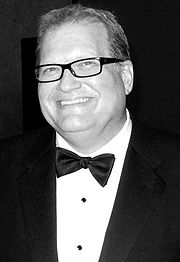
Drew Carey
RETURN TO INDEX |
U.S. Marine Corps
Reserve |
American actor, comedian, photographer, and
game show host. Gained popularity starring on his own
sitcom,
The Drew
Carey Show, and serving as host on the
U.S. version of Whose Line Is It Anyway?. Carey has appeared in several films, television series, music videos,
a made-for-television film, and a computer game. He currently hosts the
game show
The Price Is Right.
Joined in 1980 and served 6
years. |
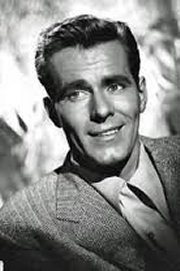
Philip Carey
RETURN TO INDEX |
U.S. Marine Corps



 |
American actor in film and television. He made appearances in
films such as
I
Was a Communist for the FBI (1951),
This Woman is Dangerous with Joan Crawford (1952)
Calamity Jane with Doris Day (1953),
Pushover (1954),
The Long Gray
Line (1955) and
Monster (1979). In 1971, Carey guest-starred on the landmark
fifth episode of
All in the
Family, playing Steve, an ex-professional football player friend of
Archie Bunker's who tells Archie he's gay. The episode was one of
the first times homosexuality had been dealt with sympathetically on
U.S. network television.
Served in WW2 and was wounded as part of the ship's detachment of the
USS Franklin (CV-13) and served again in the Korean War. |
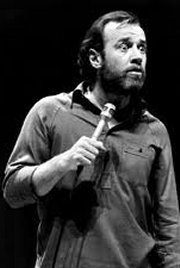
George Carlin
RETURN TO INDEX |
U.S. Air Force |
American stand-up comedian, social critic, actor and author, who won
five Grammy Awards for his comedy albums. Carlin started out as a
conventional comedian and had achieved a fair degree of success as a
Bill Cosby style raconteur in nightclubs and on TV until the late 1960s,
when he radically overhauled his persona. His routines became more
insightful, introducing more serious subjects. As he aged, he
became more cynic and bitter, unintentionally changing his stage persona
again in a radical way throughout the 90s. This new George Carlin,
usually referred to as the late George Carlin, is one of the most
acclaimed and enjoyed by the public and critics. Carlin's forte is
Lenny Bruce-style social and political commentary, spiced with
nihilistic observations about people and religion peppered with black
humor. He is also noted for his masterful knowledge and use of the
English language. Carlin's notorious "Seven Dirty Words" comedy
routine was part of a radio censorship case that made its way to the
U.S. Supreme Court in 1978.
He was trained as a
radar technician and was
stationed at
Barksdale Air Force Base in
Bossier City,
Louisiana. During this time he began working as a
disc jockey at radio
station KJOE, in the nearby city of
Shreveport. He did not complete his Air Force enlistment. Labeled an
"unproductive airman" by his superiors, Carlin was discharged on July 29, 1957. |
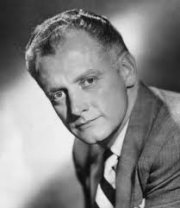
Art Carney
RETURN TO INDEX |
U.S. Army


 |
Academy Award-winning
American actor in
film,
stage, television
and
radio. He is best-known for playing
Ed Norton, opposite
Jackie Gleason's
Ralph Kramden in the situation comedy
The Honeymooners. In 1974, he won the
Academy Award for Best Actor for his performance as Harry Coombes,
an elderly man going on the road with his pet cat, in
Harry and Tonto.
Wounded in the leg during the
Battle of
Normandy in WW2 and awarded the Purple Heart. |
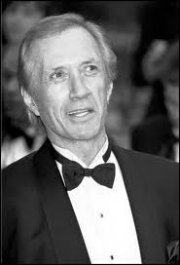
David Carradine
RETURN TO INDEX |
U.S. Army |
American
character actor, best known for his role as
Kwai Chang Caine
in the 1970s television series,
Kung Fu. His acting career, which included major and minor roles
on stage, television and cinema, spanned over four decades. A prolific
"B" movie
actor, he appeared in more than 100 feature films and was nominated four times for a
Golden Globe
Award. The last nomination was for his title role in
Quentin
Tarantino's
Kill
Bill.
Drafted in 1960 where he
drew pictures for training aids. While stationed at Fort Eustis,
Virginia he helped to establish a theater company which became known as
the "entertainment unit". He was honorably discharged after a
two-year tour. |

Johnny Carson
RETURN TO INDEX |
U.S. Navy

 |
American
television host and
comedian, known as host of
The Tonight Show Starring Johnny Carson for 30 years
(1962 to 1992). Carson received six
Emmy Awards including the Governor Award and a 1985
Peabody Award;
he was inducted into the
Television Academy Hall of Fame in 1987. He was awarded the
Presidential Medal of Freedom in 1992, and received
Kennedy
Center Honors in 1993.
Joined on June 8, 1943,
received
V-12 officer training at
Columbia
University. Commissioned an ensign late in the war,
was assigned to the
USS Pennsylvania (BB-38) in the Pacific. Served as a
communications officer in charge of decoding encrypted messages. |
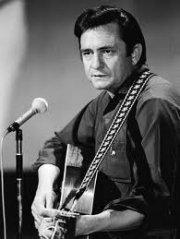
Johnny Cash
RETURN TO INDEX |
U.S. Air Force |
American singer-songwriter, actor, and author, who has been called one of the most influential musicians of the 20th
century. Although he is primarily remembered as a
country music
artist, his songs and sound spanned many other
genres including
rockabilly and
rock and roll--especially early in his career--as well as
blues,
folk, and
gospel. This crossover appeal led to Cash being inducted in both the
Country Music Hall of Fame and
Rock
and Roll Hall of Fame.
Served in the early 1950s.
When he enlisted the military would not accept initials as his name, so
he adopted John R. Cash as his legal name. After basic training in
Texas (where he met first wife Vivian Liberto), he was shipped to
Landsberg, Germany. While in the service Cash organized his first band,
the Landsberg Barbarians. He was discharged in 1954. |
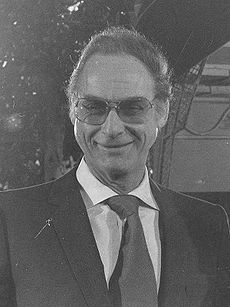
Sid Ceasar
RETURN TO INDEX |
U.S. Coast Guard
 |
American comic actor and
writer known as the leading man on the 1950s television series
Your Show of
Shows and
Caesar's Hour,
and to younger generations as Coach Calhoun in
Grease and
Grease 2.
In 1939, when WW2 was just
starting in Europe, he enlisted and was assigned to play in military
revues and shows. |
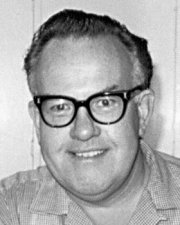
John Chambers
RETURN TO INDEX |
U.S. Army
 |
American make-up artist who became a veteran in both television and
film. After the war he found employment repairing faces and making
prosthetic limbs for wounded veterans. In 1953 he joined the NBC
television network working for many live shows for a six-year period.
His first movie was
Around the World in Eighty Days. He worked on
The List of Adrian Messenger that featured the gimmick of having the
audience guess which famous stars were under Chambers' makeup.
Chambers also worked on
The Munsters and
The Outer Limits TV series. His work became known worldwide in
the
Planet of the Apes series, for which he won a special Academy Award.
Chambers worked on the pilot of
Mission Impossible and created the pointed ears worn by Leonard
Nimoy in the original
Star Trek television series. He has a "star" on the Hollywood
Walk of Fame.
Served in WW2 as dental technician. |
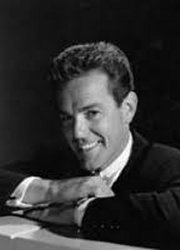
Gower Champion
RETURN TO INDEX |
U.S. Coast Guard
 |
American actor, theatre director, choreographer, and dancer. In
the early 1950s, he made several film musicals: Mr. Music (1950),
Show Boat (1951),
Lovely to Look
At (1952), the autobiographical Everything I Have Is Yours (1952),
Give a Girl a
Break (1953),
Jupiter's Darling (1955), and
Three for the
Show (1955). In 1948, Champion had begun to direct as
well, and he won the first of eight Tony Awards for his staging of Lend
an Ear. He had a solid success with
Bye Bye Birdie (1960). In 1964, he directed one of Broadway's
biggest blockbusters,
Hello, Dolly! for which he won two Tony Awards for direction and
choreography.
Served in WW2. |
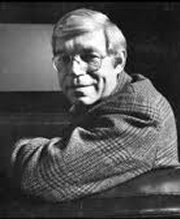
Charles Champlin
RETURN TO INDEX |
U.S. Army

 |
American film critic and writer. Champlin was a writer and
correspondent for LIFE and TIME Magazine for seventeen
years, and was a member of the Overseas Press Club. He joined the
Los Angeles Times as entertainment editor and columnist in 1965,
principal film critic, and book reviewer. He is a founder of the
Los Angeles Film Critics Association, and has been a board member of the
American Cinematheque. His television career began in 1971 when he
hosted "Film Odyssey" on PBS, introducing classic films and interviewing
major directors. Champlin taught film criticism at Loyola
Marymount University from 1969 to 1985, was adjunct professor of film at
USC from 1985 to 1996, and has also taught at UC Irvine and the AFI
Conservatory. He has also written many books.
Served in WW2 in the infantry. |
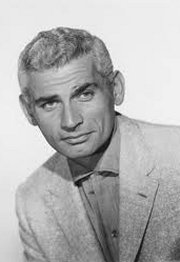
Jeff
Chandler
RETURN TO INDEX |
U.S. Army

 |
American radio and film actor and singer in the 1950s. In radio he
acted in the dramas
Escape,
Academy Award Theater,
The Whistler, and the radio detective series
Michael Shayne. In radio comedy he played bashful biology
teacher Phillip Boynton on
Our Miss Brooks. His first film appearance was in
Johnny O'Clock (1947). In the 1950s, Chandler became a star in
western and action movies; Sword In the Desert (1948). He was
nominated for an Academy Award for his role as
Cochise
in
Broken Arrow (1950). He repeated the role in
The Battle at Apache Pass (1952) and
Taza, Son of Cochise (1954). He was the first actor nominated
for an Academy Award for portraying a Native American. Chandler
became a top
leading man. Among the movies of this period are
Female on the Beach (1955), Foxfire (1955),
Away All Boats (1956), Toy Tiger (1956),
Drango
(1957), The Tattered Dress (1957),
Man in the Shadow (1957), A Stranger in My Arms (1959), The
Jayhawkers! (1959),
Thunder in the Sun (1959), and
Return to Peyton Place (1961).
Served in WW2 as a Cavlary officer, mostly in the Aleutians. His
enlistment record for the Cavalry on November 18, 1941 gave his height
as six foot four inches and his weight as 210 pounds. |
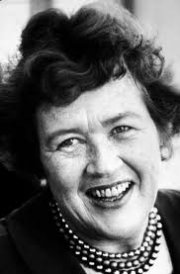
Julia Child
RETURN TO INDEX |
Office of Strategic Services |
American
chef,
author, and
television
personality. She is recognized for introducing
French cuisine
to the American public with her debut
cookbook,
Mastering the Art of French Cooking, and her subsequent
television programs, the most notable of which was
The French Chef,
which premiered in
1963.
Joined the
Office of Strategic Services (OSS) after finding that she was too
tall to enlist in the
Women's Army Corps (WACs) or in the U.S. Navy's
WAVES. She began her OSS career as a typist at its headquarters in Washington,
but because of her education and experience soon was given a more
responsible position as a top secret researcher working directly for the
head of OSS, General
William J. Donovan. As a research assistant in the Secret Intelligence division, she typed
10,000 names on white note cards to keep track of officers. For a year,
she worked at the OSS Emergency Rescue Equipment Section (ERES) in
Washington, D.C.
as a file clerk and then as an assistant to developers of a
shark repellent
needed to ensure that sharks would not explode
ordnance
targeting German
U-boats.
In 1944 she was posted to
Kandy, Ceylon (now
Sri Lanka), where her responsibilities included "registering,
cataloging and channeling a great volume of highly classified
communications" for the OSS's clandestine stations in Asia. She was later posted to China, where she received the Emblem of
Meritorious Civilian Service as head of the Registry of the OSS
Secretariat. |
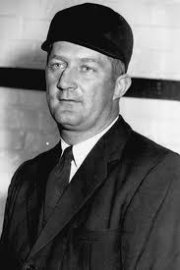
Nestor Chylak
RETURN TO INDEX |
U.S. Army



 |
American umpire in Major League Baseball who worked in the American
League from 1954 to 1978. He umpired in three ALCS, including the
first one played (1969, 1972, 1973), serving as crew chief in 1969 and
1973, and in five World Series (1957, 1960, 1966, 1971, 1977), serving
as the crew chief in 1971 (in which he called balls and strikes in the
decisive Game 7) and 1977. He also worked in six All-Star Games:
1957, 1960 (both games), 1964, 1973 and 1978, calling balls and strikes
in the second 1960 game and in 1973.
Served in WW2 in Europe in the
Battle of the
Bulge he was wounded by shrapnel from an exploding shell and was
hospitalized for eight weeks with an injury that nearly cost him his
sight. He earned both the Silver Star and Purple Heart during his
service. |
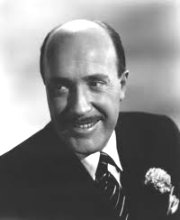
Fred Clark
RETURN TO INDEX |
U.S. Navy
& U.S. Army


 |
American film character actor.
, Clark made his film debut in 1947 in
The Unsuspected. His 20-year film career included almost 70 films,
and numerous television appearances. Among his films are
Ride the Pink Horse (1948),
Mr. Peabody and the Mermaid (1948),
Flamingo Road (1949),
White Heat (1949),
Sunset Boulevard (1950),
A Place in the Sun (1951),
How to Marry a Millionaire (1953),
The Court-Martial of Billy Mitchell (1955),
How to Be Very, Very Popular (1955),
Daddy Long Legs (1955),
Auntie Mame (1958), and
Visit to a Small Planet (1960). He continued making films
during the 1960s, most notably a large role in
The Curse of the Mummy's Tomb (1964) and
John Goldfarb, Please Come Home (1965). He was more often seen
on television, as a regular on
Burns and Allen as their neighbor Harry Morton, and guest roles on
The Twilight Zone,
The Beverly Hillbillies, and
I Dream of Jeannie.
Served in WW2 as a Navy pilot (1942) but later joined the Army and spent
nearly two years with the Third Army in Europe. |
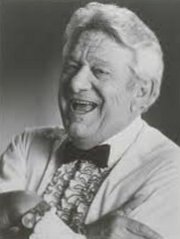
Jerry Clower
RETURN TO INDEX |
U.S. Navy

 |
American country comedian best known for his stories of the rural South.
Clower made 27 full length recordings in his 27 year career as a
professional entertainer. In 1973, Clower became a member of the
Grand Ole Opry, and remained with that organization until his death.
He was the author of 4 books.
Served in WW2. Began a 2-year stint immediately after graduating
high school in 1944. Upon his discharge, in 1946, he was a Radioman
Third Class (RMN3) on the
USS
Bennington (CV-20) and had earned the American Campaign Medal, the
Asiatic-Pacific Campaign Medal (with two bronze service stars), and the
World War II Victory Medal. |
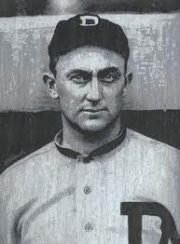
Ty Cobb
RETURN TO INDEX |
U.S. Army
 |
American Major
League Baseball outfielder.
Cobb spent 22 seasons with the
Detroit Tigers, the
last six as the team's
player-manager, and finished his career with the
Philadelphia Athletics. Cobb is widely regarded as one of the best players of all time.
He still holds several records as of 2011, including the highest
career
batting average (.366 or .367, depending on source) and most career
batting titles with 11 (or 12, depending on source.) He
retained many other records for almost a half century or more, including
most career
hits until 1985 (4,189 or 4,191, depending on source),
most career
runs (2,245 or 2,246 depending on source) until 2001, most career
games played (3,035) and
at bats (11,429 or 11,434 depending on source) until 1974, and the
modern record for most career
stolen bases (892) until 1977. He committed 271 errors in his
career, the most by any
American League
outfielder.
Served in WW1. In October 1918, Cobb enlisted in the
Chemical Corps
branch of the
United States Army and was sent to the
Allied Expeditionary Forces headquarters in
Chaumont, France. He served approximately 67 days overseas
before receiving an
honorable discharge and returning to the U.S. Cobb served as a
captain underneath the command of Major
Branch Rickey,
the president of the
St. Louis
Cardinals. Other baseball players serving in this unit included
Captain Christy
Mathewson and Lieutenant
George Sisler.
All of these men were assigned to the Gas and Flame Division where they
trained soldiers in preparation for
chemical attacks by exposing them to gas chambers in a controlled
environment. |
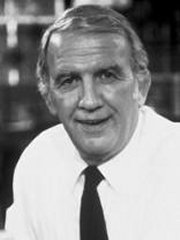
Nicholas
Colasanto
RETURN TO INDEX |
U.S. Navy
 |
American
actor and
television director, known primarily for his role as
Coach Ernie
Pantusso on the sitcom
Cheers. He also
appeared in feature films which include
Fat City,
Family Plot, and
Raging Bull.
Left High School to serve in
WW2 from January 22, 1943 to July 3, 1945. Held the enlisted rate
of Coxswain. |
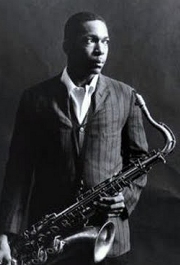
John Coltrane
RETURN TO INDEX |
U.S. Navy
 |
American jazz saxophonist and composer. Working in the bebop and hard
bop idioms early in his career, he helped pioneer the use of modes in
jazz and later was at the forefront of free jazz.
Served in WW2 enlisting in 1945. He played in the Navy jazz band
once he was stationed in Hawaii. |
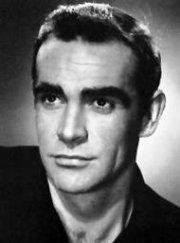
Sean Connery
RETURN TO INDEX |
Royal Navy |
Scottish actor and producer who has won an
Academy Award,
two
BAFTA Awards (one of them being a
BAFTA Academy Fellowship Award) and three
Golden Globes. Connery is best-known for portraying the
character
James Bond, starring in seven Bond films between 1962 and 1983 (six
"official" EON productions films and the non-official
Kevin McClory-helmed
Thunderball remake,
Never Say
Never Again). In 1988, Connery won the
Academy Award for Best Supporting Actor for his role in
The Untouchables. His film career also includes such films as
Indiana Jones and the Last Crusade,
The Hunt for Red October,
Highlander, and
The Rock.
Enlisted at age 16 (1946)
and served 3 years. |
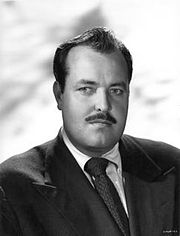
William Conrad
RETURN TO INDEX |
U.S. Army Air Forces

 |
American actor,
film and
television director. He was usually cast as threatening
figures, perhaps his most notable role was his first credited one, as
one of the gunmen sent to eliminate
Burt Lancaster
in
The Killers. He also appeared in
The Naked Jungle.
He also stared
Cannon, which ran on
CBS from 1971 to 1976.
Served as a fighter in WW2.
On the day he was commissioned in 1943 at
Luke Field, he married June Nelson. He left the U.S. Army Air Force with the rank of captain, and as a
producer-director of the
Armed Forces Radio Service in London. |
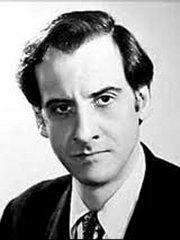
Hans Conried
RETURN TO INDEX |
U.S. Army
 |
American comedian, character actor and voice actor. He played many
major classical roles onstage. After having been a member of Orson
Welles' Mercury Theatre Company, he was heard as Professor Kropotkin on
the radio show "My Friend Irma" and had various roles on the "Edgar
Bergen - Charlie McCarthy Show". He was in the original cast of Cole
Porter's 1953 Broadway hit "Can-Can" and stayed with the show for more
than a year. Known for his sharp wit, Conried was in demand as an
actor, panelist and narrator, appearing frequently in television series
and movies throughout the 60s and 70s. Perhaps best known for his
portrayal of Uncle Tonoose on
"The Danny Thomas Show"
(1953).
Enlisted in September 1944 during
WW2. |
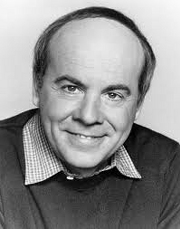
Tim Conway
RETURN TO INDEX |
U.S. Army |
American comedian and actor who
worked in sitcoms, sketch comedy, and film. Conway is best known
for his role in
McHale's Navy as the inept Ensign Charles Parker, and for
co-starring alongside Carol Burnett on
The Carol Burnett Show which earned him five Emmy Awards. .
Served in the early 1950s for two years ("defending Seattle"). |
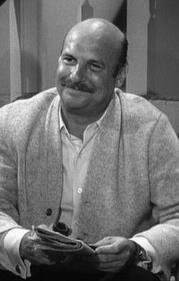
Jackie Coogan
RETURN TO INDEX |
U.S. Army
& U.S. Army Air Forces

 |
American actor who began his movie career as a
child actor in
silent films. Many years later, he became known as
Uncle Fester on
1960s
sitcom
The Addams Family.
Served as a flight officer
during the
Burma Campaign in 1944. |

Jackie Cooper
RETURN TO INDEX |
U.S. Army
 |
American
actor,
TV
director, TV
producer and executive. He was a
child actor who
managed to transition to an adult career. As of 2011, Cooper's
Oscar-nominated performance in
Skippy is the earliest nomination (1931) in any Academy Award
category in which the nominee is still living.
Served in WW2. |

Bill Cosby
RETURN TO INDEX |
U.S. Navy |
American comedian, actor, author, television producer, educator,
musician and activist. A veteran stand-up performer, he got his start at
various clubs, then landed a starring role in the 1960s action show,
I Spy. He later starred in his own series, the
situation comedy
The Bill
Cosby Show. He was one of the major characters on the
children's television series
The Electric Company for its first two seasons, and created the
educational cartoon comedy series
Fat
Albert and the Cosby Kids, about a group of young friends
growing up in the city.
Join in the mid-1950s and served at the
Marine
Corps Base Quantico, Virginia,
Naval
Station Argentia, Newfoundland and at the
Bethesda Naval Hospital in Maryland. While serving in the Navy as a
Hospital Corpsman for four years, Cosby worked in physical therapy
with some seriously injured
Korean War casualties, which helped him discover what was important to him.
|
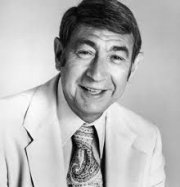
Howard Cosell
RETURN TO INDEX |
U.S. Army
 |
American
sports journalist who was widely known for his blustery, cocksure
personality.
Served in WW2 in the
Army Transportation Corps, where he was promoted to the rank of
major. |
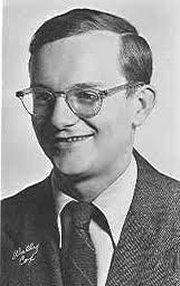
Wally Cox
RETURN TO INDEX |
U.S. Army
 |
American comedian and actor,
particularly associated with the early years of television in the U.S.
He appeared in the TV series
Mr. Peepers (1952 to 1955), plus several other popular shows, and as
a character actor in over 20 films. Wally Cox was the voice
of the popular animated cartoon character
Underdog. He also was a guest on the game show What's My Line
and on the pilot episodes of
Mission: Impossible and
It Takes a Thief. Cox made several appearances on
Here's Lucy, as well as
The Beverly Hillbillies and evening talk shows. Cox published
a number of books including Mr. Peepers, My Life as a Small Boy, Ralph
Makes Good, and a children's book, The Tenth Life of Osiris Oakes.
Served in WW2 for 4 months. |
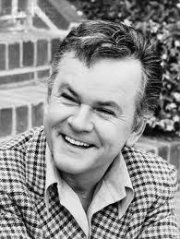
Bob Crane
RETURN TO INDEX |
U.S. Army
National Guard |
American actor and
disc jockey, best
known for his performance as Colonel Robert E. Hogan in the
television
sitcom
Hogan's Heroes
from 1965 to 1971, and for his murder.
On June 21, 1948, he
enlisted in the
National Guard and was honorably discharged on May 1, 1950. |

Broderick
Crawford
RETURN TO INDEX |
U.S. Army Air Forces

 |
American stage, film, radio and TV actor, often cast in tough-guy
roles and best known for his starring role in the television series
Highway Patrol. Started his career in vaudeville with his
parents. Gained fame in 1937, when he starred as Lenny in
Of Mice and Men on
Broadway. He appeared in
Scandal Sheet (1952),
Human Desire (1954),
Il
bidone (1955),
Between Heaven and Hell (1956), and
Not as a Stranger (1955). Crawford was typecast in his
television roles as gruff but fearless characters. He worked in
140 motion pictures and television series during his career and remained
an especially durable presence in television. He is one of the few
performers who have two stars on the Hollywood Walk of Fame, one for
motion pictures at 6901 Hollywood Boulevard and another for television
at 6734 Hollywood Boulevard.
Served in WW2. Assigned to the Armed Forces Network in London, he was sent
to Britain in 1944 as a sergeant, serving as an announcer for the Glenn
Miller American Band. |
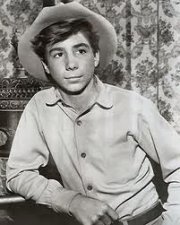
Johnny Crawford
RETURN TO INDEX |
U.S. Army
 |
American character actor, singer and musician. He first performed
before a national audience as a Mouseketeer. At 12, Crawford rose
to fame for playing Mark McCain, the son of the Lucas McCain character,
in the popular 1960s ABC western series,
The Rifleman,
which aired from 1958 to 1963. He was nominated for an Emmy Award
at the age of thirteen for his role. Crawford had wide popularity
with American teenagers and a recording career that generated five Top
40 hits, including the single "Cindy's Birthday," which peaked at #8 on
Billboard's Top 40 in 1962. His other hits included "Proud" (#29,
1963), "Your Nose is Gonna Grow" (#14, 1962) and "Rumors" (#12, 1962).
Among his films are Indian Paint (1965), The Restless Ones (1965), and
El Dorado (1967).
Enlisted for two years and worked on training films as a production
coordinator, assistant director, script supervisor and occasional actor.
He was an E-5 when he received an honorable discharge in December 1967. |
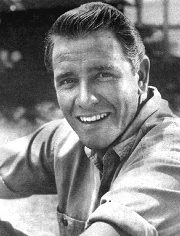
Richard Crenna
RETURN TO INDEX |
U.S. Army

 |
American motion picture, television, and radio actor and occasional
television director. He starred in
The Sand Pebbles,
Wait Until Dark,
Body
Heat,
the first three Rambo movies,
Hot Shots! Part Deux, and
The Flamingo Kid. Crenna played CBS-TV network series
Our Miss Brooks, and ABC's TV comedy series
The Real McCoys, (1957-1963).
Served in WW2 as an infantry radioman where he saw combat duty in the
European theater at the Battle of the Bulge. He later served in the
Pacific theater decoding Japanese intercepts. |
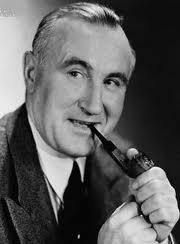
Donald Crisp
RETURN TO INDEX |
British Army
& U.S. Army Reserves



 |
English-American film actor. He was also an early motion picture
producer, director and screenwriter. He won an Academy Award for
Best Supporting Actor in 1942 for his performance in
How Green Was My Valley. From 1908 to 1930, in addition to
directing dozens of films, he also appeared in nearly 100 silent films,
though many in bit or small parts. One notable exception was his
casting by Griffith as General Ulysses S. Grant in Griffith's landmark
film
The Birth of a Nation in 1915. Crisp directed some 70 films in
all, most notably
The Navigator (1924) with Buster Keaton and
Don Q, Son of Zorro (1925). Throughout the 1930s and 1940s, he
appeared in a wide range of roles alongside some of the era's biggest
stars, including Katharine Hepburn in
The Little Minister (1934), Charles Laughton and Clark Gable in
Mutiny on the Bounty (1935), Bette Davis and Henry Fonda in
That Certain Woman (1937), Laurence Olivier in
Wuthering Heights (1939), Errol Flynn in
The Private Lives of Elizabeth and Essex (1939) and
The Sea Hawk (1940), and Gregory Peck in
The Valley of Decision (1945).
Served as a trooper in the 10th Hussars in the
Boer War, in WW1 he served in British army intelligence, and he
later served served in U.S. Army Reserves during WW2, where he rose to
the rank of colonel. |

Robert Cummings
RETURN TO INDEX |
U.S. Army Air Forces
 |
American
motion picture and
television
actor.
Cummings performed mainly in comedies, but was effective in his few
dramas, especially two
Alfred Hitchcock
films,
Saboteur (1942) and
Dial M for
Murder (1954).
In November 1942, he joined
the
United States Army Air Corps. During the war he served as a flight instructor.
He had worked as a flight instructor for many years prior to the
war. He was, in fact, the first certified flight instructor in the United
States, having gained certification in 1938. After the war, he served as a pilot in the
United States Air Force Reserve. |
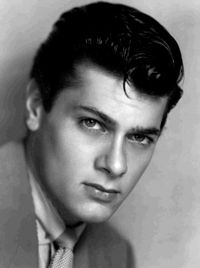
Tony Curtis
RETURN TO INDEX |
U.S. Navy

 |
American film actor whose career spanned six decades, but had his
greatest popularity during the 1950s and early 1960s. He acted in over
100 films in roles covering a wide range of genres, from light comedy to
serious drama. In his later years, Curtis made numerous television
appearances. He won his first serious recognition as a skilled
dramatic actor in
Sweet Smell of Success (1957). The following year he was
nominated for an Oscar for Best Actor in another drama,
The Defiant Ones (1958). Curtis then gave what many believe
was his best acting in
Some Like It Hot (1959). That was followed by the comedy
Operation Petticoat (1959),
Sex and the Single Girl (1964), and
The Great Race (1965). His dramas included playing the slave
Antoninus in
Spartacus (1960) , The Outsider (1961), and
The Boston Strangler (1968). Curtis appeared frequently on
television; he co-starred with Roger Moore in the TV series
The Persuaders!. Later, he co-starred in
McCoy and
Vega$. In the early 1960s, he was immortalized as "Stony
Curtis," a voice-over guest star on
The Flintstones.
Served
in WW2 after
Pearl Harbor was
bombed and war was declared. Chose submarine duty and served
aboard
USS Proteus, a submarine tender. |
|

